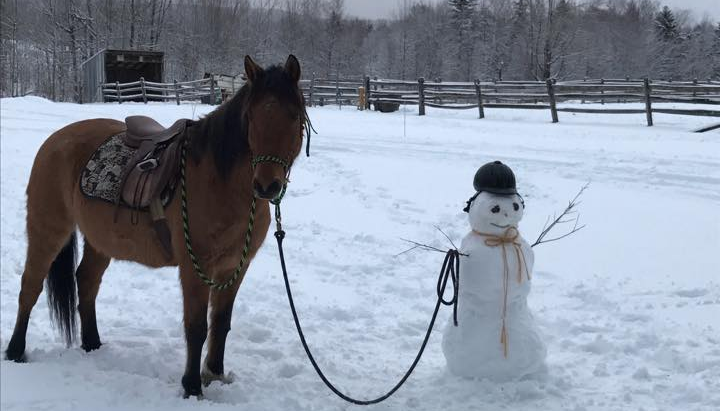Winter can be hard on our horses feet…Here are a few tips to make sure you horses feet stay in good condition this winter so they are ready to go when the snow melts!
- Continue to pick out feet daily and check for debris and snow balls that may accumulate
- Schedule regular farrier visits to keep feet trimmed/shod
- During periods when the ground is icy, consider spreading sand, cat litter, or a pet-safe salt to provide traction in high-traffic areas around the bar
- During cold weather circulation in the hoof decreases, which leads to slower hoof growth. Any defects you may be trying to correct, such as cracks, will take longer to resolve. Horses with a history of laminitis may already have a damaged vascular supply. Protect these at-risk horses with blankets, leg wraps, and adequate shelter with deep bedding
- Frozen pastures can become as hard as concrete and may lead to an increase in soreness or bruising. If your horse experiences reoccurring problems with soreness, discuss using shoes or pads with your farrier
- Horses that live in areas where changes in winter temperatures cause pastures to fluctuate between dry and frozen to wet and muddy may see an increase in the incidence of abscesses caused by bacteria entering the hoof. A vet will need to find and drain the abscess to relieve the discomfort, and the hoof will need to stay clean and dry to heal
- Horses with bare feet will collect fewer snow balls in their hooves than horses that wear shoes. Snowballs in the hoof can lead to discomfort, bruising, or stress on the tendons, ligaments, and joints. If your horse has shoes on during the winter try coating the sole of the hooves in cooking oil, petroleum jelly, (Dr. Crawford’s favorite is PAM cooking spray) to prevent snow from collecting in the shoes. If you live in an area that receives frequent snow, talk to your farrier about more permanent options such as rim pads. Rim pads do not cover the whole hoof, but create a ridge that makes it difficult for snow to accumulate
- Continue to use your hoof supplement during winter months even if your horse may be less active. Proper building blocks are required year-round for healthy hooves. New hoof growth takes months; periods of inadequate nutrition will lead to bands of poor quality hoof that can impact hoof quality as they grow out.
Questions? Give us a call or send us an email at info@sawtoothequine.com Hang in there, spring is coming!

